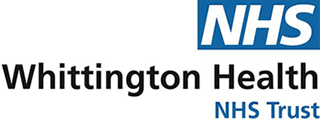Breast MRI
What is magnetic resonance imaging (MRI)?
Magnetic resonance imaging (MRI) uses a large magnet, radiofrequencies (sound), and a computer to make detailed pictures of organs and structures within the body.
The MRI machine is a large, doughnut-shaped machine that creates a strong magnetic field around the person being examined. Because MRI uses magnetic fields and sound waves to take pictures of the body there are no biological side-effects as no radiation is used, unlike with X-ray or CT
Why do I need a Breast MRI?
The test may help the clinician assess the breasts for specific conditions such as:
- Lump / tumour characterisation
- Pain, abnormal discharge
- Characterisation of lesions / tumours
- Follow up imaging to check the status of a previous problem
- Infection
- Recommendation following ultrasound
- To rule out cancers
- Ruptured or possible ruptured implants
Because of the strong magnet in an MRI scanner, MRI cannot be used if you have:
- Implanted pacemaker or cardiac defibrillator
- Some intracranial aneurysm clips
- Cochlear implants
- Certain prosthetic devices
- Implanted medicine infusion pumps or medicine ports
- Neurostimulators
- Bone-growth stimulators
- Certain intrauterine contraceptive devices
- Any other type of iron-based metal implants
- Tattoos or body piercings
- Internal metal objects or fragments, such as bullets or shrapnel, surgical clips, pins, plates, screws, metal sutures, or wire mesh
Tell your clinician if you are pregnant or think you may be. In general, there is no known risk of MRI in pregnancy. But in the first trimester, MRI should only be used to look at very important problems or suspected problems.
There may be other risks depending on your specific health condition. Be certain the radiographer knows about all of your health conditions.
Tell the radiographer doing the test if you:
- Have ever had an imaging test (like MRI or CT) with contrast dye
- Are allergic to contrast dye or any medicines
- Have a serious health problem. This includes diabetes or kidney disease
- Are pregnant or may be pregnant or are breastfeeding
- Have any implanted device or metal clips or pins in your body
How do I get ready for a Breast MRI scan?
The radiographer will explain the procedure to you and give you a chance to ask any questions.
Before the MRI scan, it is very important that you tell the radiographer if any of these apply to you:
- You are claustrophobic and think that you will be unable to lie still inside the scanning machine
- You have a pacemaker or have had heart valves replaced
- You have any type of implanted pump, such as an insulin pump
- You have metal plates, pins, metal implants, surgical staples, or aneurysm clips
- You have any metallic fragments anywhere in the body
- You have permanent eyeliner or tattoos
- You are pregnant or think you may be pregnant
- You ever had a bullet wound
- You have ever worked with metal (for example, a metal grinder or welder)
- You have any body piercings
- You have an intrauterine device (IUD)
- You are wearing a medicine patch.
You may take medicine (sedative) to help you relax before the procedure if you are claustrophobic, this will need to be prescribed by your GP or consultant. Please plan to have someone drive you home afterward.
What happens during a Breast MRI?
- You will change into a gown for the test
- The radiographer will help position and secure you on a table in the exam room. The more still you stay, the better the images will be
- You will need to lie on your front during the scan
- A Radiographer or imaging assistant will insert an IV cannula so that you can be given the contrast injection if requested by your doctor
- The MRI machine will scan your body before the contrast dye is injected and again after the injection. You will be alone in the room, but you can talk to the people operating the machine. The machine may make some humming, bumping, or pinging noises as it scans you. This is normal
- You may need to stay in place while the images are reviewed. If necessary, additional images will be created
What happens after a Breast MRI?
Move slowly when getting up from the scanner table so you don't have any dizziness or light-headedness from lying flat for the length of the procedure.
If any sedatives were used for the scan, you may need to rest until the sedatives have worn off. You will also need someone to drive you home.
If contrast dye is used, you may be watched for some time for any side effects or reactions to the contrast dye, such as itching, swelling, rash, or trouble breathing.
If you notice any pain, redness, or swelling at the IV site after you go home, contact your GP. This could be a sign of infection or other type of reaction.
Otherwise, there is no special type of care required after a MRI breast scan unless the radiographer tells you differently.
The radiographer may give you other instructions after the procedure, depending on your particular situation.
Last updated17 Feb 2021

